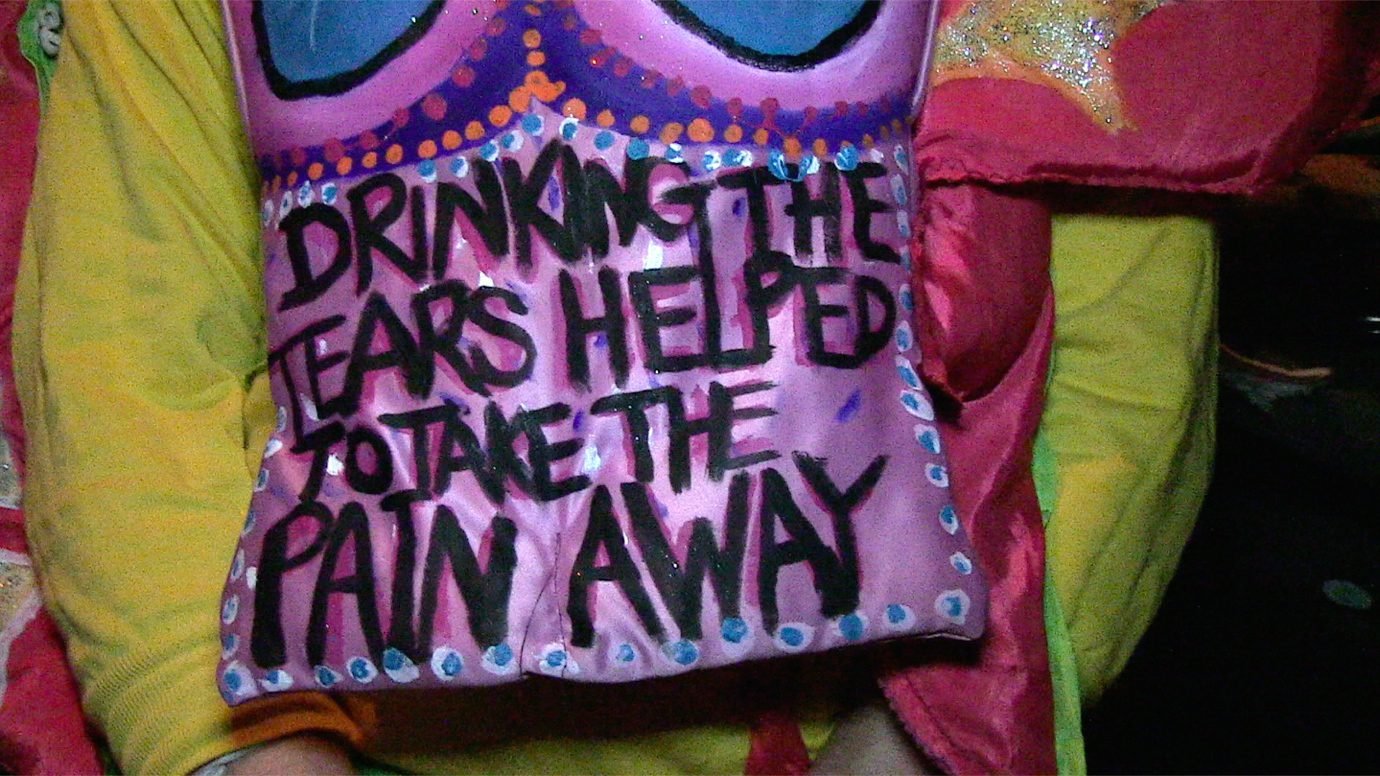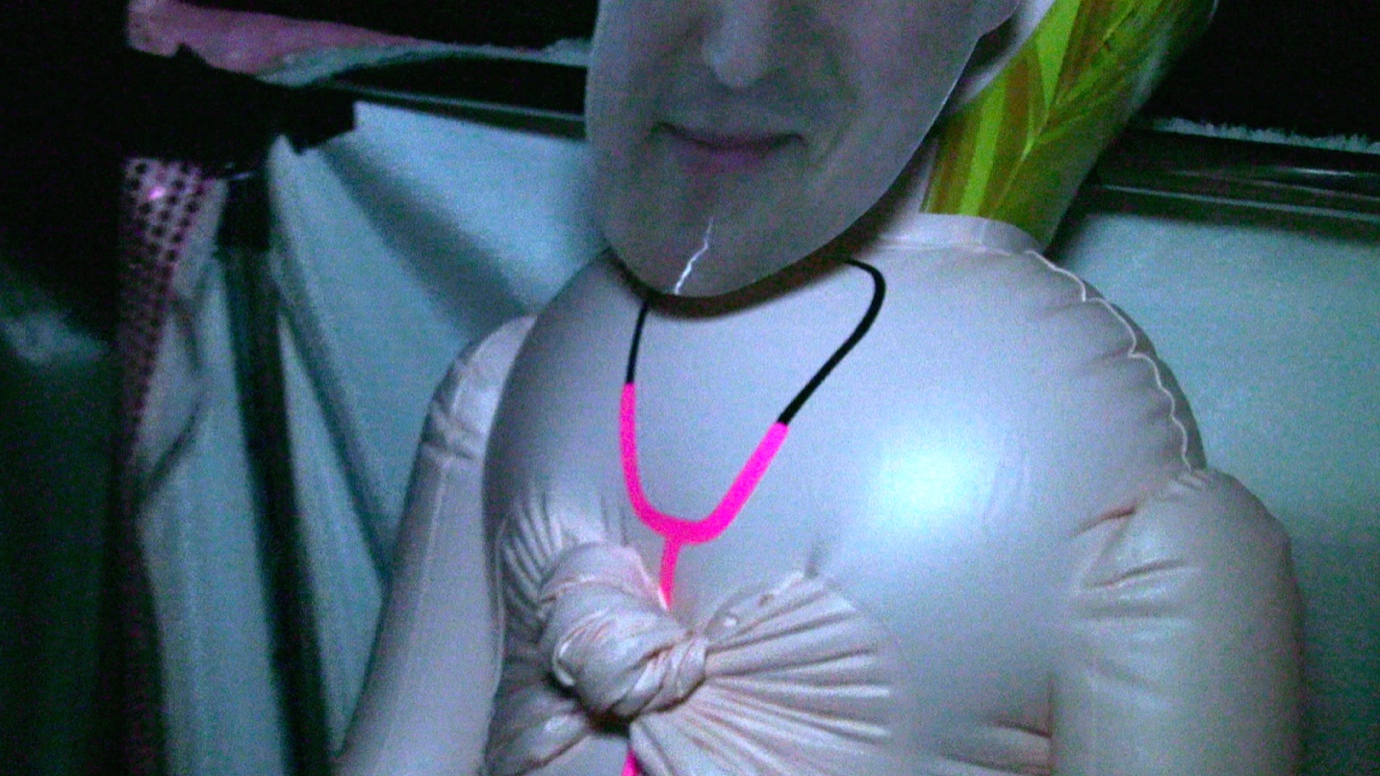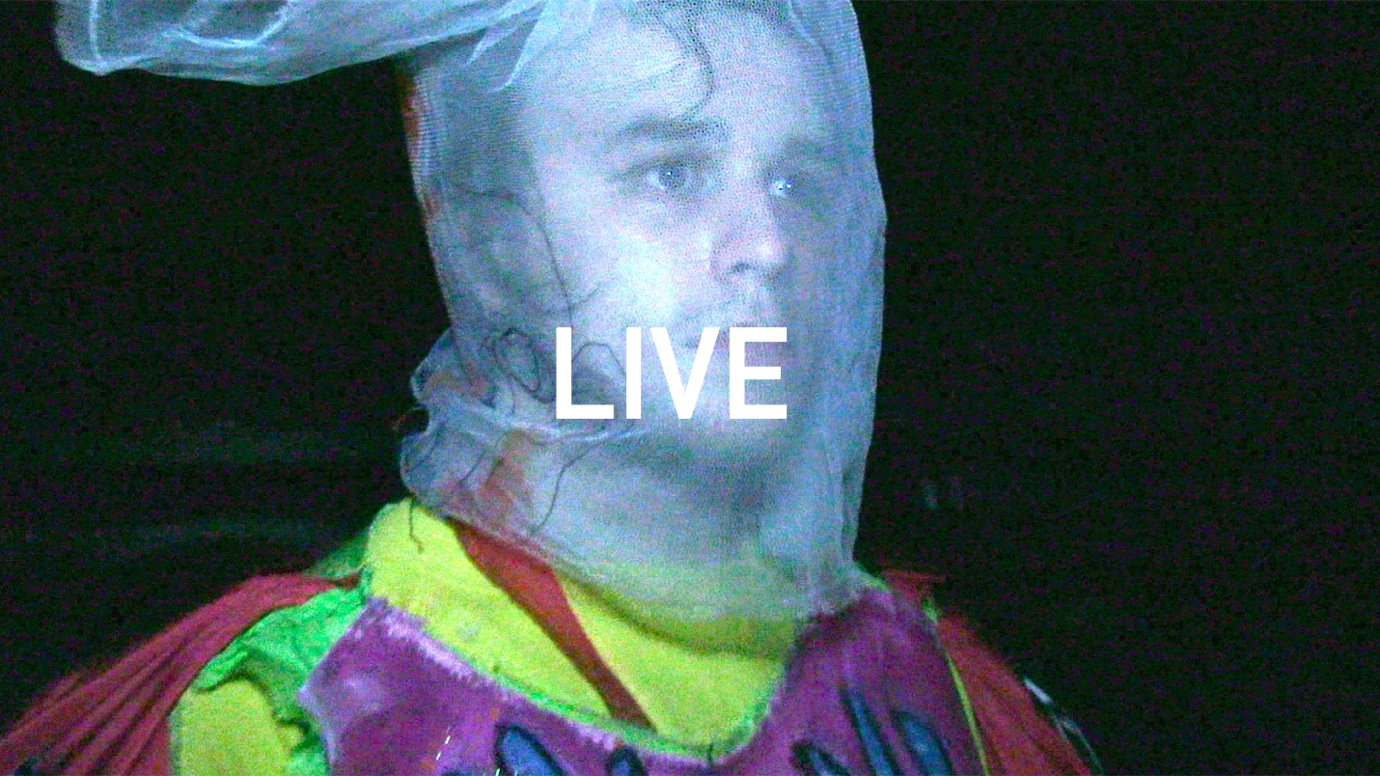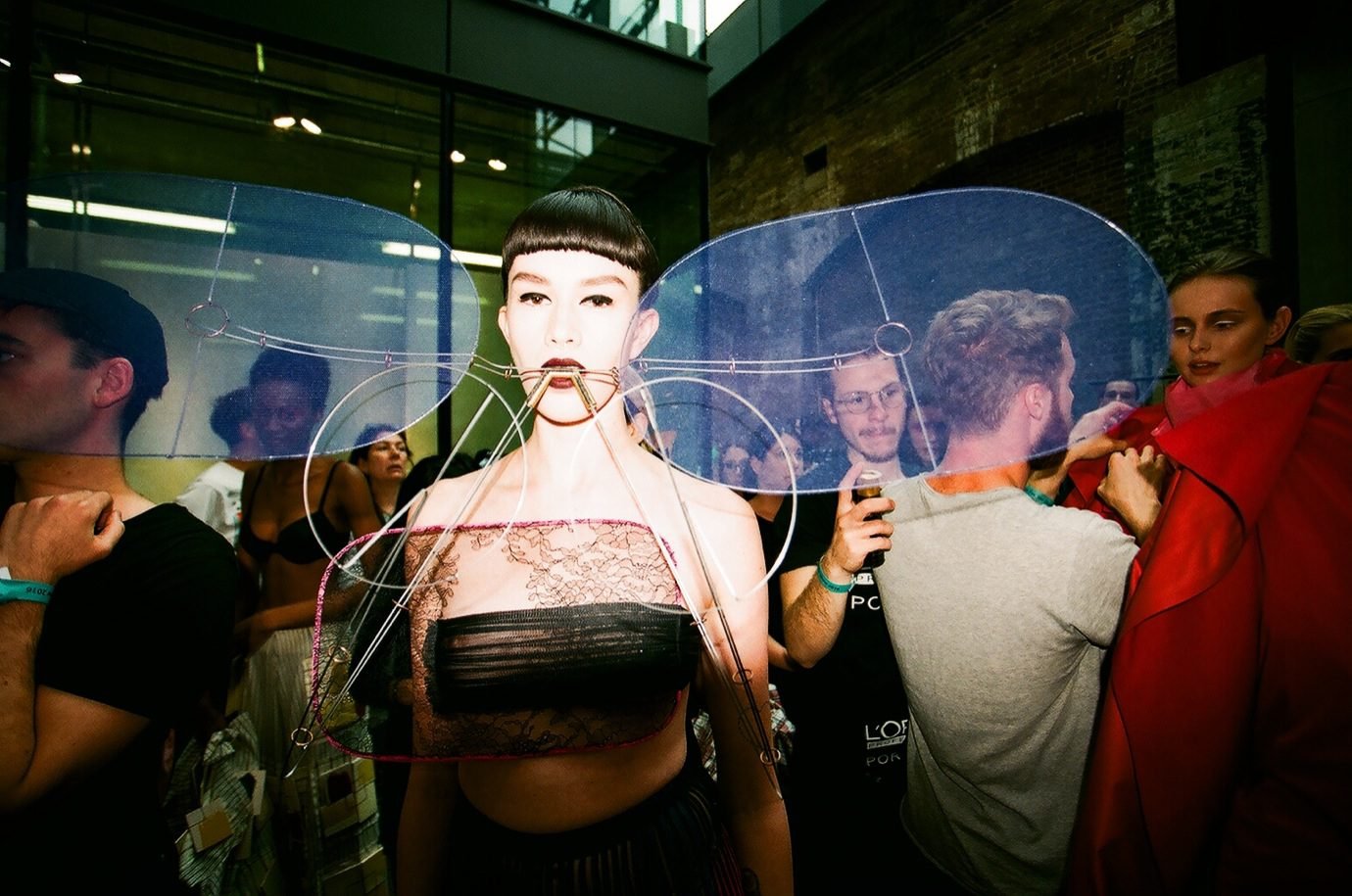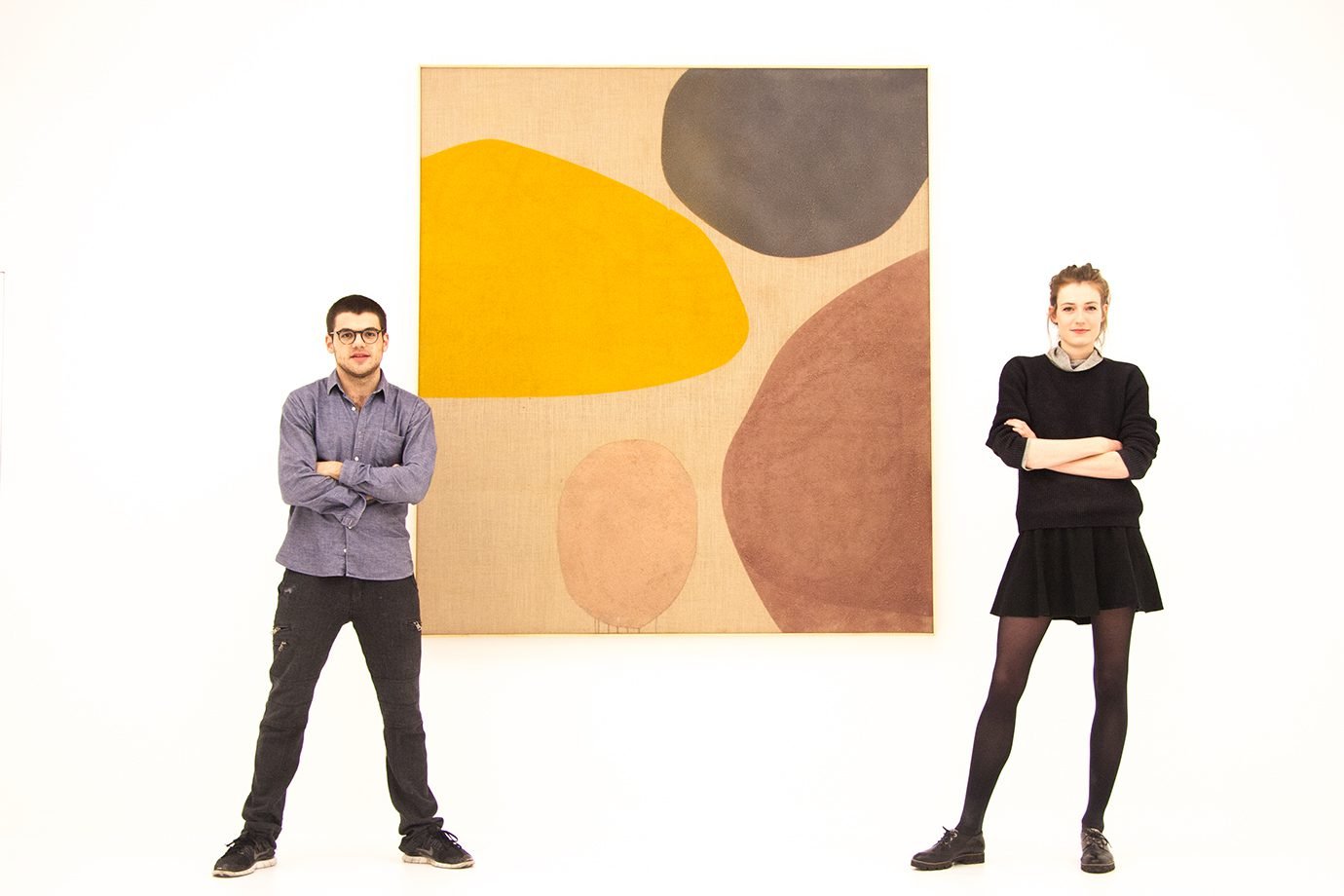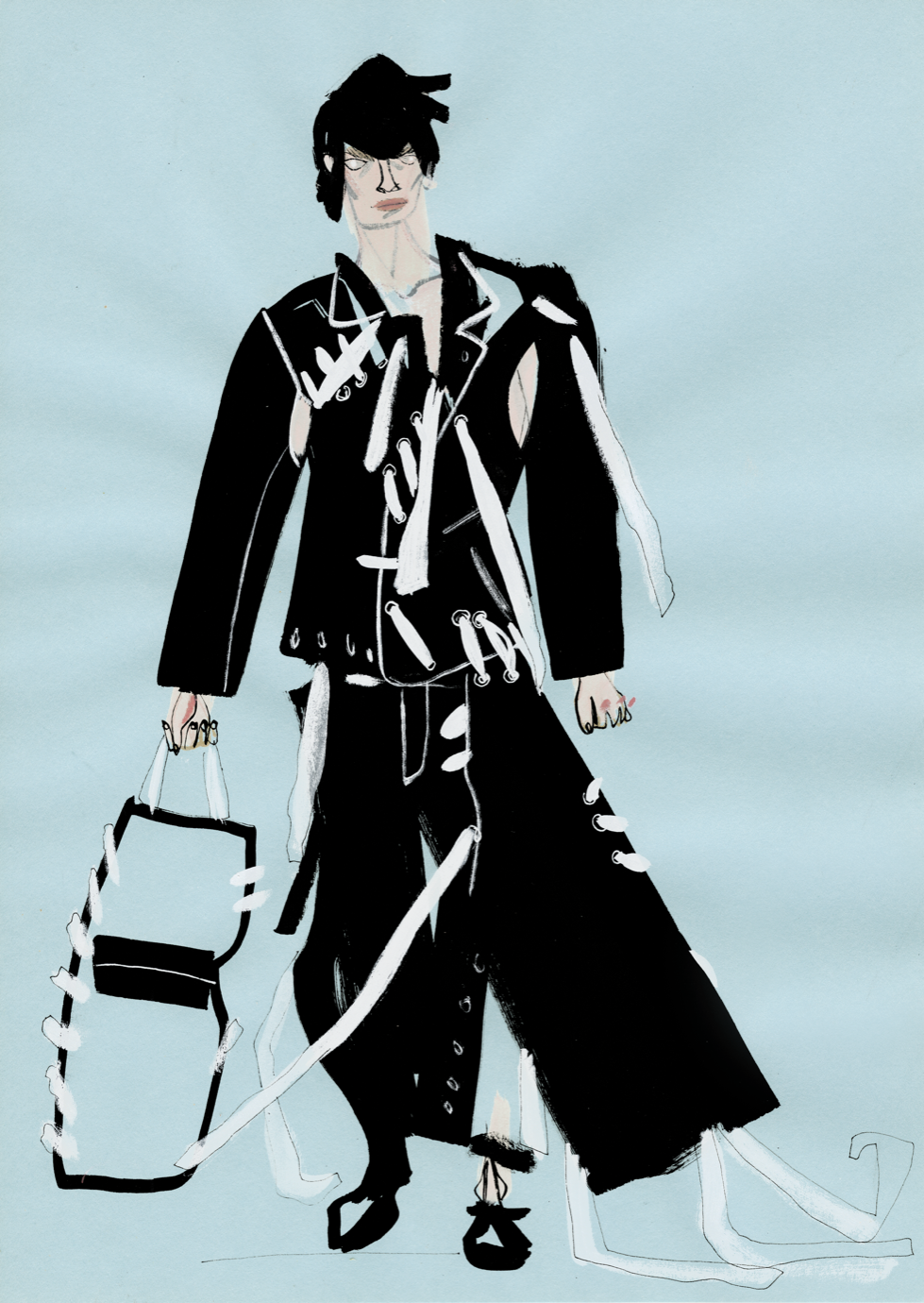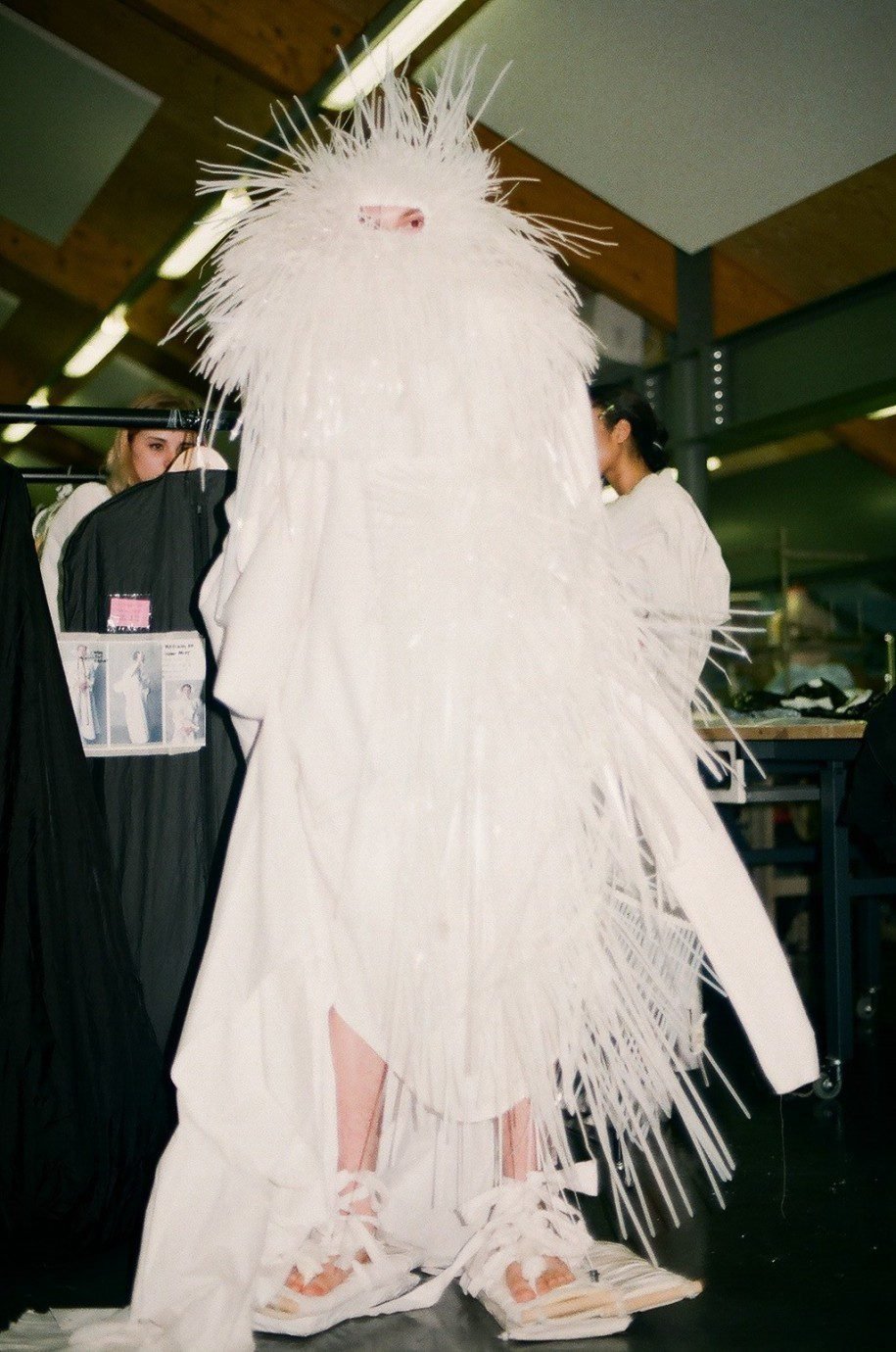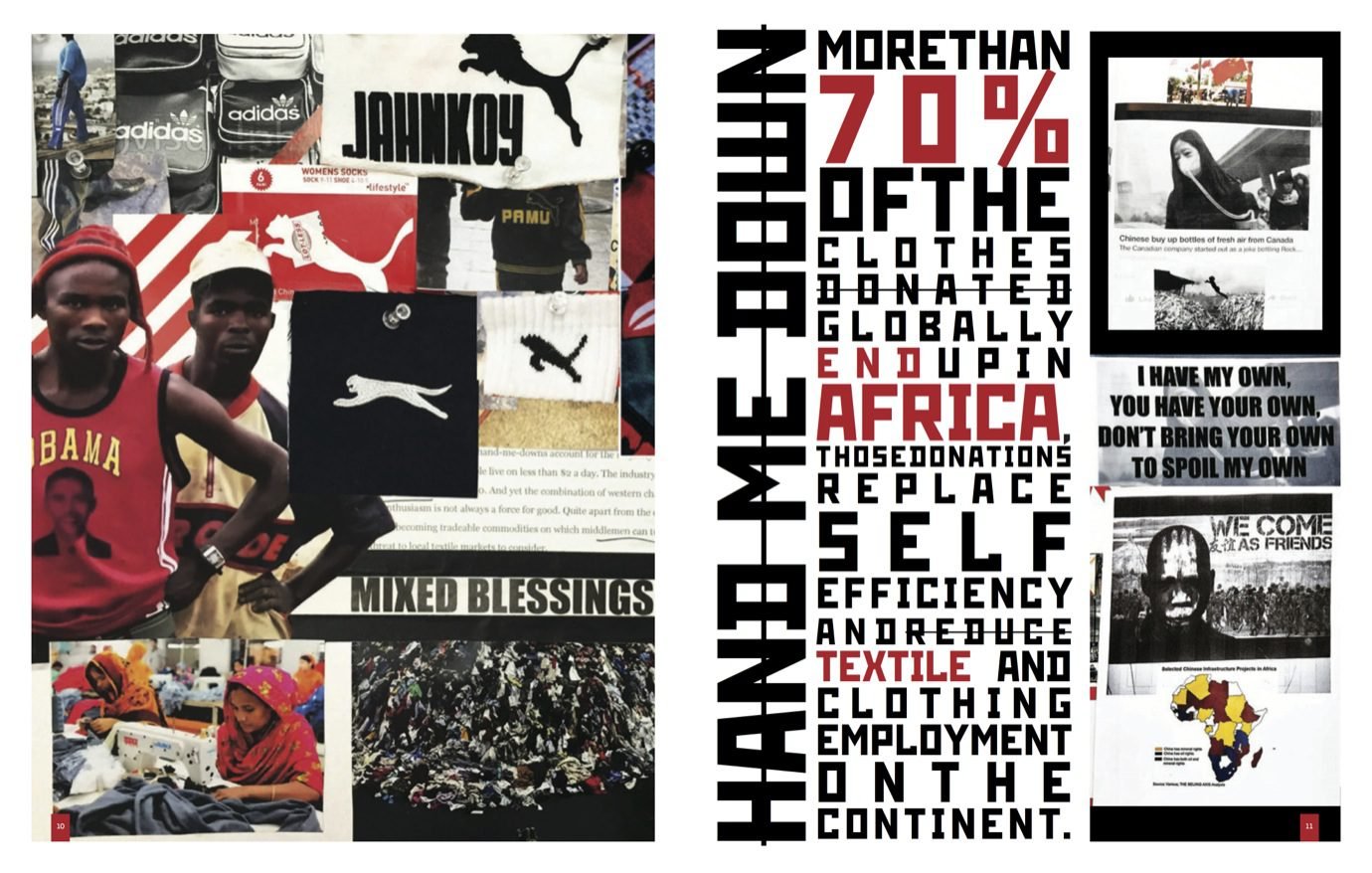Highlights are a sexy pig-mask-clad girl grinding on a sex doll with David Cameron’s face whilst lip syncing to one of Christina Aguilera’s classic songs, in a performance named Untitled; a piece called Death saw a man in a very tight blue and pink swimsuit dragging himself across an eight foot long dining table, mimicking breast stroke; and a sketch show-esqué TV chef frantically ironing a photograph of a chicken, whilst a video from an abattoir paired with classical music played in the background, was entitled Minshin’s Kitchen. What is clear to any spectator, is that practicing performance art requires an unquenchable love for life’s randomness, for the artists welcome it into their world with open arms, viewing it as an opportunity to grow as a performer and push theatre to the limit. We caught eight students pre and post show, to see how they incorporate performance in their lives.
Walk into the Platform Theatre pre-show, and one is immediately greeted by a cacophony of screams. “They cut my scene with the salt and water!”, “How dare they!” and “The entire piece is ruined!” Other students crowd around, desperately trying to work around the tragedy of the eradication of a scene that involves pouring a 1KG bag of salt on the floor. What is unfolding, is the collaboration of students from all three years of the Performance Design and Practice degree along with Fine Art — an entirely different learning environment. Their pieces are rife with poetic absurdism and a compelling sense of immediacy, each separate performance existing in its own universe.
Film by Jelly Louise Schuhmacher
How has your life changed from this time last year?
Minshin Yano, 3rd year Performance Design and Practice: I have less sleeping time.
Becky Cove, 3rd year Performance Design and Practice: I’ve learnt to calm down and cope better under pressure. There was a point last year when I was just running around like a mad woman and just hating the experience. But I feel like now I’ve gotten beyond that. The thought of graduating has made me become aware of how incredible it is to be somewhere I can get up everyday, and be essentially free to do whatever I want. I feel like that is incredibly rare in the world outside art college.
Juliette Placco, 1st year Performance Design and Practice: This time last year, I was also at Central Saint Martins. I was doing Sculpture on Fine Art, and I think PDP is completely different. I thought it was going to be more similar, but it’s a very different process. I’m still a bit lost in it, to be honest, but I’m really happy.
Raphael M Schulenburg, 3rd year Performance Design and Practice: I have become more aware of graduating and having to find my own way — moving into a more professional world, rather than being in a safe environment. In the first few years of university you can get too comfortable, working on projects which are set, and there isn’t much that can go wrong.
Tom Coates, 2nd year Fine Art: I feel like now I’m so much more trusted by my peers and tutors, and that gives you a certain level of self-confidence which naturally grows. I’m much more comfortable working with others, collaborating in professional and nonprofessional ways, and I think that gives us a lot of abilities outside of school.
Leticia Laxon, 2nd year Fine Art: My relationship with the space changed — with painting, starting to perform and using huge spaces: all my artwork is changing.
Sam Shaw, 2nd year Fine Art: My life changes every moment, everyone’s life is changing every moment. Maybe there has been a progression of how I can articulate myself, or the ability to benefit people in my work.
Korallia Stergides, 3rd year Performance Design and Practice: Since last year it’s changed quite… I don’t want to say drastically, but I’ve found a language through which I can communicate, more so than last year.
How would you like to see performance art develop as a discipline within the art world over the next few years?
Minshin Yano: I feel that recently people are very reliant on the visual side of information. Performance art gives you the possibility to make people feel the communication, which is what artists are trying to do, but in a much more personal way, through using the whole body to experience and understand the communication. I think that’s good, though, especially as now everyone is on their phone, so the whole art world is becoming even more visual. So we trust in everything we see, even if deep down we know that it’s edited or photoshopped. But the body is very trusting, so performance art can show something visual in a truthful way.
Becky Cove: I would like there to be an expansion of different subcultures and categories within performance art, such as live art and theatre. I feel that people too easily categorize things as either performance art or theater, and each have very different preconceptions.
Juliette Placco: Performance art and contemporary avant-garde theatre are still very new and young disciplines. I think that over the next few years it’s going to change very quickly, which is important, in order to bring it to a bigger audience.
Raphael M Schulenburg: I would like it to stay how it is and not become too academic. It keeps this open space for ideas and experimentation, rather than becoming too fixed.
Leticia Laxon: I want to see more development of documentation of the performance. When I think about performing and documenting it, I immediately ask myself whether I am performing for the camera or to the audience.
Sam Shaw: For it to not seem so separate, as a designed performance existing in an art world. For it to not be segregated. If we start attributing these labels to things, it starts to become exclusive, and that leads to, well, nothing positive.
What scares you the most?
Minshin Yano: Mice!
Becky Cove: What scares me in terms of my practise, is the initial point of putting an idea in front of someone other than yourself.
Juliette Placco: Losing control.
Raphael M Schulenburg: That I won’t survive, physically: the rent in London and living here. It’s just something that needs more funding and attention.
Tom Coates: The bottom of the ocean. But I interpret that into a fear of the unknown and a certain vulnerability.
Leticia Laxon: Failure.
Sam Shaw: The fear of dying unprepared, dying with an unpeaceful mind, an unfinished life.
Korallia Stergides: Ceasing to question stuff, and just being okay with taking things as they are given to me.
Do you think performance art revolves more around visceral emotion or logical thought?
Minshin Yano: It depends. What I experience with my body in everyday life is what is most important. I don’t like things to be too logical, because I think that doesn’t let you feel it. I want everybody to feel my work and then afterwards link it to their everyday life through thought and logic.
Becky Cove: Actually neither. Because I’m naturally a very logical and ordered person, I’ve spent this whole year trying to discover mechanisms which allow me to experience more irrational thoughts. I think irrationality is so much more than feeling a raw emotion, it’s about just letting something happen and trusting that to make something. To me performance art is about discovering the beauty in random acts, and allowing a journey to evolve without logic.
Tom Coates: I would say the former, definitely.
Leticia Laxon: Both.
Sam Shaw: I think there’s a lot of feeling involved in logical thought, and at the same time there’s a lot of logical thought in feeling. Yes, there is a distinction between the two, but I don’t think they’re separate.
Korallia Stergides: In my work I don’t really work from impulse or emotion. It’s more what I like to call ‘intuitive improvised action’, so there is logical thinking but also a space for randomness.
What themes do you like to explore in your work?
Minshin Yano: The relationship between still life images and performing through the body, making it into art.
Becky Cove: I like to explore the moving body. I used to be a dancer, and specifically I like to use found objects to inform action.
Juliette Placco: I change my mind a lot, so I don’t really have one central theme that interests me.
Raphael M Schulenburg: One of my favorite things to explore is failure, and struggling, which ends in frustration, but there can be some boredom involved in that too.
Tom Coates: I like to explore themes of objects, interactions, and add in humor. Sort of perversions and interpretations of familiar situations, but taking them into slightly more surreal territories.
Korallia Stergides: The relationship of object and subject, live and mediated. I like exposing links between spaces, heterotopias, the space in between everything. So I look at dualisms a lot, things existing in the same time frame, and the body together within the space.
Sam Shaw: Love, the wish for people to be happy, joy, compassion, showing people that they can improve themselves, colors and shapes. They’re things which are relevant to everyone.

